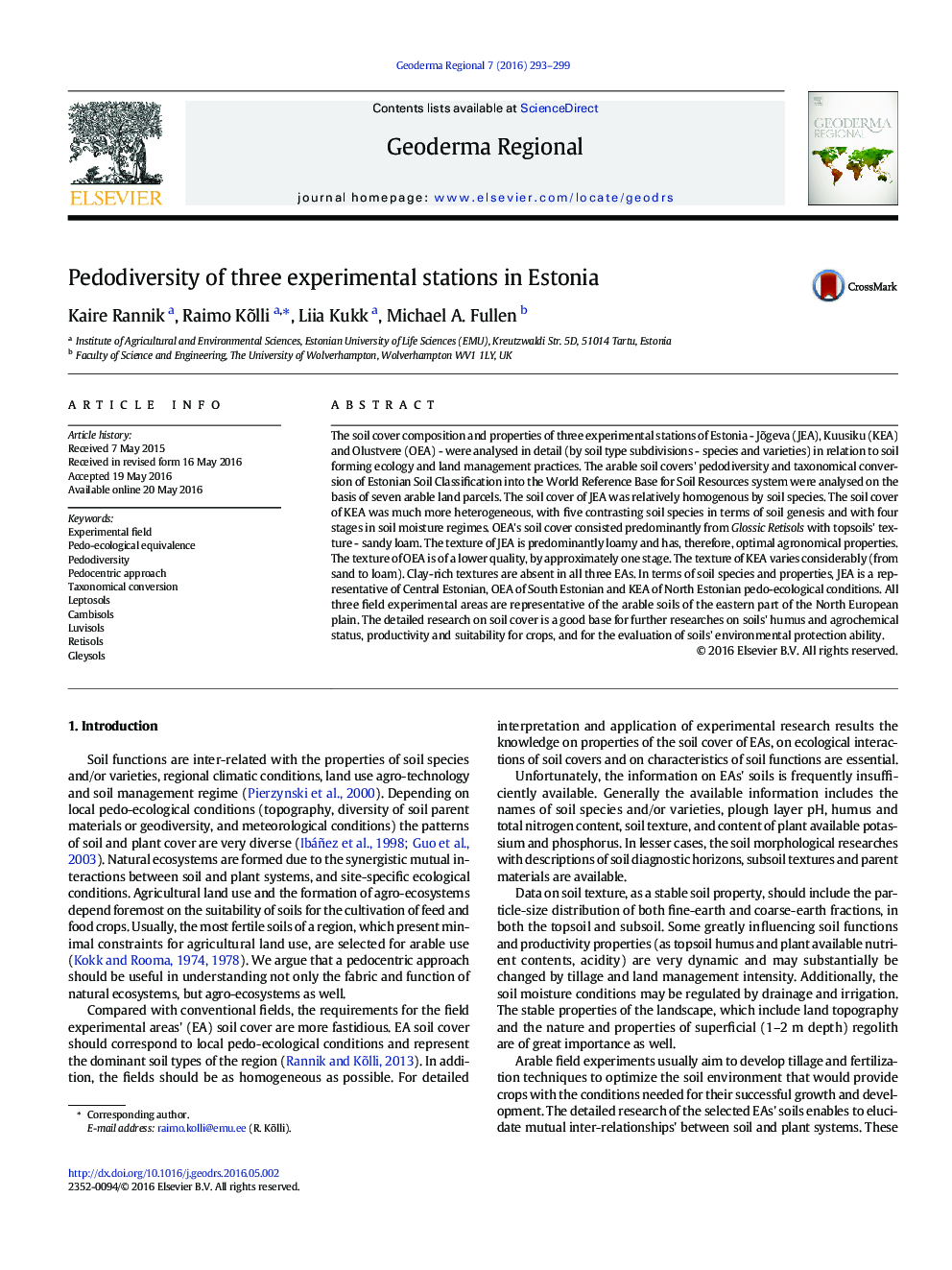| کد مقاله | کد نشریه | سال انتشار | مقاله انگلیسی | نسخه تمام متن |
|---|---|---|---|---|
| 4480745 | 1412772 | 2016 | 7 صفحه PDF | دانلود رایگان |
• Pedodiversity of experimental fields' soil cover is analysed by soil genesis and soil texture.
• The formation and properties of dominant soils are analysed in concordance with their profile rebuilding.
• The correlation of Estonian Soil Classification with WRB is analysed on soil species (subdivision of soil type) level.
• Biodiversity and environmental heterogeneity of the area should be treated on the basis of soils.
• Detailed researches of pedodiversity form a good basis for the further study of soils' environmental protective ability.
The soil cover composition and properties of three experimental stations of Estonia - Jõgeva (JEA), Kuusiku (KEA) and Olustvere (OEA) - were analysed in detail (by soil type subdivisions - species and varieties) in relation to soil forming ecology and land management practices. The arable soil covers' pedodiversity and taxonomical conversion of Estonian Soil Classification into the World Reference Base for Soil Resources system were analysed on the basis of seven arable land parcels. The soil cover of JEA was relatively homogenous by soil species. The soil cover of KEA was much more heterogeneous, with five contrasting soil species in terms of soil genesis and with four stages in soil moisture regimes. OEA's soil cover consisted predominantly from Glossic Retisols with topsoils' texture - sandy loam. The texture of JEA is predominantly loamy and has, therefore, optimal agronomical properties. The texture of OEA is of a lower quality, by approximately one stage. The texture of KEA varies considerably (from sand to loam). Clay-rich textures are absent in all three EAs. In terms of soil species and properties, JEA is a representative of Central Estonian, OEA of South Estonian and KEA of North Estonian pedo-ecological conditions. All three field experimental areas are representative of the arable soils of the eastern part of the North European plain. The detailed research on soil cover is a good base for further researches on soils' humus and agrochemical status, productivity and suitability for crops, and for the evaluation of soils' environmental protection ability.
Journal: Geoderma Regional - Volume 7, Issue 3, September 2016, Pages 293–299
